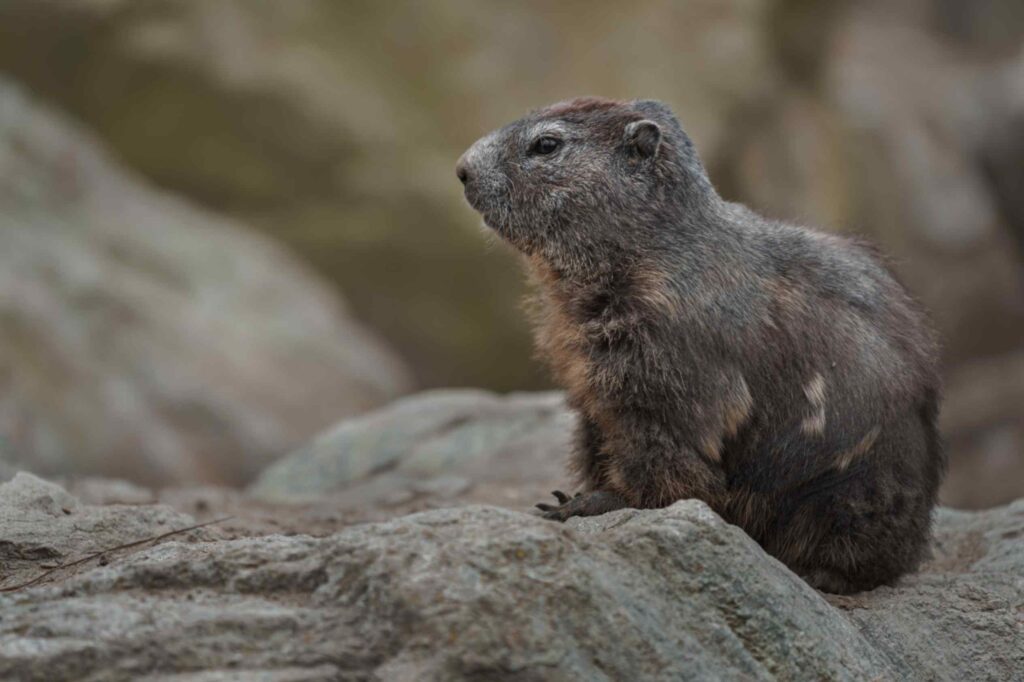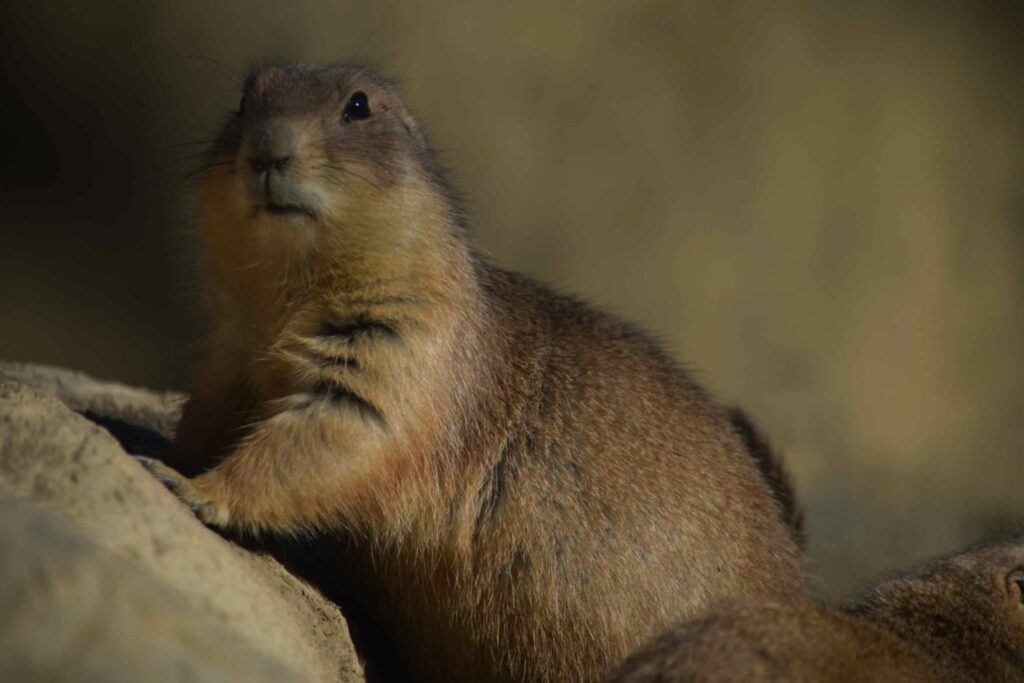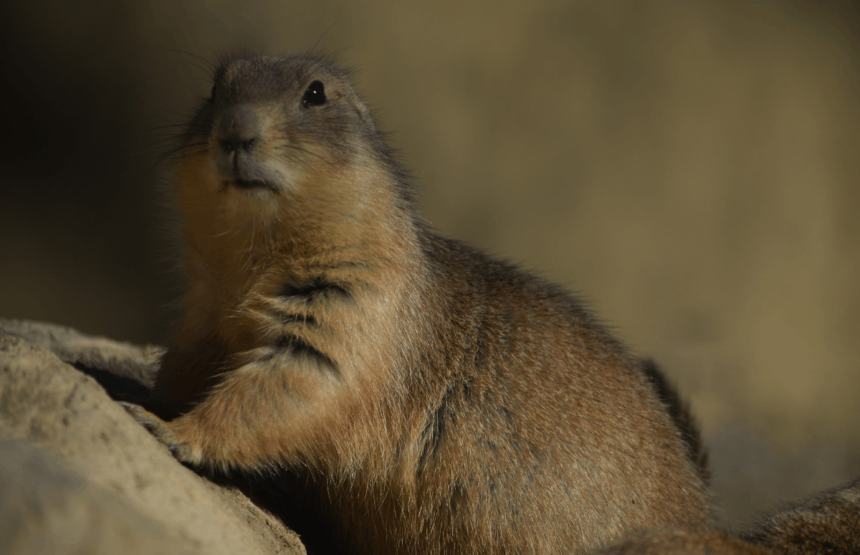Rock Chuck Animal
The rock chuck, commonly known as a yellow-bellied marmot, is a fascinating ground-dwelling rodent native to the mountainous regions of North America. These animals are well adapted to their rugged environments, making them a key player in the ecosystems they inhabit. In this article, we’ll dive deep into everything you need to know about rock chucks, from their physical characteristics to their behavior, habitat, and significance in the natural world.
what is a rock chuck
A rock chuck, or yellow-bellied marmot is a rather large type of marmot belonging to the family Sciuridae of the order Rodentia. The marmots belong to the large ground squirrels, out of which the yellow-bellied marmot is one of the 14 species classified under the Marmota genus. Rock chucks are resident in the north west part of America where they are found in the rocky area of the rocky Mountain and in the area known as Sierra Nevada Living at altitudes of between 2000-4250m.

Physical Characteristics of Rock Chucks
A rock chucks are robust mice and weigh in between 3 to 11 pound, and males are generally bigger than females. They have sturdy and short extremities and long claws adapted for digging and for burrowing. They also have long tails that are very bushy and this is used when they are balancing themselves while climbing trees, their color often ranges from brown, gray and even yellow.
The most important and, in our opinion, the only easily recognizable field character is the colour of a yellowish ventral fur which contrasts sharply with the generally brown hair of the rest of the body. The guinea pigs possess small round-shaped ears and incisors with large size which is the characteristic of continuously growing tooth, therefore, they feed on hard plant parts and foliage.
Habitat and Distribution
The rock chuck’s habitat is typically rocky areas, as its name suggests, often found in talus slopes, rocky meadows, and cliff sides. These locations provide natural shelters and lookout points, allowing rock chucks to remain vigilant for predators.
Their geographical range covers parts of the United States and Canada, especially in western North America. Rock chucks thrive in regions such as:
- Colorado
- Wyoming
- Montana
- Utah
- California
- British Columbia
Rock chucks also prefer areas with ample vegetation, as they are herbivores that feed primarily on grasses, flowers, fruits, and seeds.

Diet and Foraging Behavior
Rock chucks are primarily herbivorous, with a diet consisting of various types of grasses, herbs, and flowers. They are opportunistic feeders and will consume almost any plant material available in their environment, including:
- Grasses
- Dandelions
- Alfalfa
- Wildflowers
- Seeds
During the summer months, they focus on fattening up in preparation for their lengthy hibernation. Rock chucks store large amounts of body fat to survive the long winter months when food is scarce. They will occasionally feed on insects or bird eggs, though this is relatively rare.
Behavior and Social Structure
ock chucks are friendly creatures and they group themselves into a large colony, which comprises of one or a number of females, and a dominant male and their young ones. Their level of social organization is quite higher, the dominating male of the group will guard the group as well as the territory against any intruder or a predator. Pronk chucks are rodents inhabiting rock regions of the Americas and communicate with each other through distinctive whistle, chirr and squeal sounds in their colonies. These vocalizations act as signal calls and they help in making those around them aware of the presence of danger, especially where there is presence of a hawk, fox or coyote among other futures.
Of all the ground squirrels that exist in the world, the rock chucks are particularly famous for their hibernation. Like other marmots, the rock chucks also have hibernation that is one of the conspicuous features of the Hibernating animals to enable them go through cold seasons. These animals hibernate starting the end of September or early October and comeback from hibernation in April or in May help with the low body temperature and slow heart rate to help them with there food shortage.

Reproduction and Life Cycle
Rock chucks reproduce seasonally during the course of the year. They normally breed in late spring immediately after emergence from hibernation which is between April or May The gestation period of the female rock chucks lasts for about 30 days and they give birth to between 3 to 8 pups.
This race is born begging for its bread and butter and yet grows up so fast. In mid-summer, they start coming out of burrow and grasp feeding and social behaviors of the colony. They reproductive maturity at the age of 2 years, but it is worth noting that most of the young marmots die before they can even reach one year owing to natural predation.
Predators and Threats
Despite their ability to stay hidden in rocky terrain and their keen sense of hearing, rock chucks face numerous predators. Their primary natural enemies include:
- Raptors (such as eagles and hawks)
- Coyotes
- Foxes
- Badgers
- Bears
In addition to natural predators, rock chucks can also be affected by human activities, including habitat destruction and hunting. While they are not currently endangered, human encroachment on their habitats poses a potential threat to their populations.
Rock Chucks and Ecosystem Importance
It is important to stress that rock chucks are rather useful and important animals in their respective environments. In as much as they are herbivores, they assist in regulation of plant species and also their digging enables soil aeration for plant development. It is also the logical home for other animals including, reptiles and insects due to its burrows. This, in most cases, translates and serves to depict a normal function as far as the given ecosystem is concerned.
Since they are classified as prey animals they provide the many predators with food and hence they are very relevant in the food chain in their ecosystems.
Interesting Facts About Rock Chucks
- Long Hibernation: Rock chucks hibernate for up to 8 months a year, making them one of the longest-hibernating animals in North America.
- Vocal Communication: Their high-pitched alarm calls can be heard over long distances, alerting the colony of nearby predators.
- Diet Diversity: While primarily herbivorous, rock chucks occasionally consume insects or bird eggs if their usual food sources are scarce.
- Social Animals: They live in complex social groups, with a clear hierarchy and division of roles.
- Lifespan: In the wild, rock chucks can live for up to 15 years, though many do not survive their early years due to predation.
Conservation Status
The yellow-bellied marmot is not currently listed as endangered or threatened. However, like many wildlife species, they are affected by habitat loss and changes due to human expansion. Conservation efforts aimed at protecting their natural habitats help ensure that rock chucks continue to thrive in the wild.
Conclusion
The rock chuck is a remarkable animal that is well adapted to its environment, playing a vital role in the ecosystems of North America. From their hibernation habits to their social structure and foraging behaviors, rock chucks are a key species in maintaining the balance of their habitats. By understanding and appreciating their importance, we can take steps to ensure they continue to be a thriving part of our natural world.






